Aplicações da Inteligência Artificial Generativa

A Inteligência Artificial Generativa (IA) é uma tecnologia que pode criar vários tipos de conteúdo, como texto, imagens, áudio e dados sintéticos. Recentemente, a IA generativa ganhou ampla atenção por suas interfaces simples e fáceis de usar, capazes de gerar textos, gráficos e vídeos de alta qualidade em segundos. Este artigo explorará mais detalhadamente os últimos desenvolvimentos da IA generativa e suas aplicações práticas.
Processo de desenvolvimento da Inteligência Artificial Generativa
A IA generativa surgiu pela primeira vez na década de 1960 em chatbots, mas amadureceu verdadeiramente em 2014 com a introdução dos GANs (Redes Geradoras Adversariais). GANs são um tipo de algoritmo de aprendizado de máquina que permite que a IA gere imagens e áudio convincentemente realistas. Isso abriu novas possibilidades para a IA generativa, como aprimorar a dublagem de filmes e criar conteúdo educacional. No entanto, também trouxe desafios, como a criação de imagens e vídeos falsos.
Com o rápido desenvolvimento dos grandes modelos de linguagem (LLM), a IA generativa entrou em uma nova era. Atualmente, modelos de IA generativa podem escrever textos envolventes, desenhar imagens realistas e até criar cenários de comédia em tempo real. Além disso, inovações na IA multimodal permitem que equipes gerem conteúdo em vários tipos de mídia, incluindo textos, gráficos e vídeos.
Tecnologia moderna de IA generativa
A IA generativa moderna deve muito à tecnologia de Transformadores. Os Transformadores permitem que os pesquisadores treinem grandes modelos sem a necessidade de grandes quantidades de dados rotulados. Eles introduziram o conceito de "atenção", permitindo que os modelos acompanhassem as conexões de vocabulário em livros inteiros, e não apenas em frases individuais. Esses modelos agora podem até analisar código, proteínas, produtos químicos e DNA. Aqui estão alguns dos principais modelos de IA generativa moderna:
DALL-E
DALL-E é um modelo de geração de imagens desenvolvido pela OpenAI, que combina arte e tecnologia. Lançado pela primeira vez em 2021, pode gerar várias imagens com base em descrições textuais. Em 2022, a OpenAI lançou uma versão mais avançada, DALL-E 2, que melhorou a qualidade das imagens e introduziu capacidades de edição. Com a otimização tecnológica contínua, a API do DALL-E também foi aberta ao público, sendo amplamente aplicada nas indústrias criativas. Enquanto isso, as discussões sobre seus impactos éticos e sociais aumentaram, enfatizando a importância da segurança e conformidade do conteúdo gerado por IA. O desenvolvimento do DALL-E demonstra o enorme potencial da IA no campo criativo.
ChatGPT
ChatGPT, desenvolvido pela OpenAI, é um modelo de diálogo baseado em processamento de linguagem natural, passando por várias etapas de desenvolvimento. Sua base é a arquitetura GPT (Generative Pre-trained Transformer), lançada pela primeira vez em 2018. Em 2020, a OpenAI lançou o GPT-3, que possui 175 bilhões de parâmetros, melhorando significativamente a capacidade de compreensão e geração de linguagem. Em 2021, a versão inicial do ChatGPT foi lançada, com o objetivo de interagir naturalmente com os usuários, e desde então tem sido continuamente otimizada através de feedbacks. Em 2022, a OpenAI introduziu o serviço de assinatura ChatGPT Plus, que oferece respostas mais rápidas e recursos de acesso prioritário. Em 2023, a OpenAI lançou o ChatGPT baseado no GPT-4, melhorando ainda mais a qualidade das interações e a compreensão contextual. O desenvolvimento do ChatGPT não apenas impulsionou o uso de IA em comunicações diárias, mas também gerou amplas discussões sobre ética em IA, geração de conteúdo e interações homem-IA.
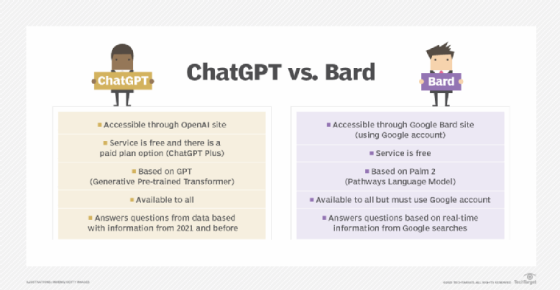
Gemini
Gemini, desenvolvido pela equipe de pesquisa em IA do Google, é uma série de modelos avançados de linguagem, cujo desenvolvimento começou em 2023. Os modelos Gemini foram projetados para competir diretamente com o ChatGPT da OpenAI e outros modelos de linguagem. Em dezembro de 2023, o Google lançou o Gemini 1, marcando o lançamento oficial da série, demonstrando sua forte capacidade em processamento e geração de linguagem natural. Posteriormente, o Google lançou o Gemini 1.5, melhorando ainda mais o desempenho e a velocidade de resposta dos modelos. O lançamento do Gemini destaca o compromisso do Google com a inovação contínua no campo da IA e seus esforços para integrar vários tipos de informações e capacidades de processamento multimodal. À medida que o Gemini continua evoluindo, o Google está explorando suas possíveis aplicações em educação, saúde e indústrias criativas, impulsionando a ampla aplicação e avanço da tecnologia de IA.
Aplicações práticas da Inteligência Artificial Generativa
A IA generativa pode aprender a partir dos dados e criar novas informações que se assemelham às entradas de treinamento, encontrando aplicações no design, música, arte e muitos outros campos. Seu impacto é mais pronunciado em aplicações de texto.
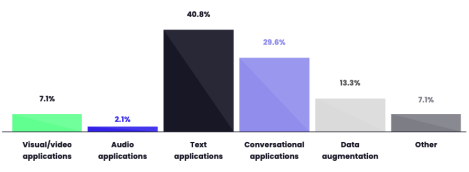
Aplicações de áudio
Os modelos de áudio generativos de IA criam novos sons, como partituras musicais e sons ambientais, usando aprendizado de máquina e algoritmos. Eles podem compor áudio original, sonificar dados, criar experiências de áudio interativas, gerar música, melhorar áudio, criar efeitos sonoros, transcrever áudio e sintetizar fala. Utilizando modelos como o WaveNet e GANs, eles geram novas saídas de áudio através do extenso treinamento de conjuntos de dados. Por exemplo, o WaveNet do Google:
- WaveNet: WaveNet, desenvolvido pelo Google DeepMind, é um modelo avançado de texto para fala (TTS) que gera áudio de voz humana altamente natural através de tecnologia de aprendizado profundo. Foi aplicado no Google Assistant e no Google Translate, proporcionando saídas de fala mais naturais e fluídas.
Aplicação de texto
O gerador de texto de IA pode criar conteúdo de sites, relatórios, postagens em redes sociais, etc., utilizando tecnologias de processamento de linguagem natural (NLP) e geração de linguagem natural (NLG), e gera textos através da estrutura algorítmica e do aprendizado não supervisionado. XXAI é um software de aplicação alimentado por modelos avançados como GPT-4, Claude 3 e DALL-E 3, que pode ser perfeitamente integrado em todas as aplicações e sites, fornecendo ferramentas abrangentes para melhorar a escrita, a comunicação e a produtividade. Por exemplo:
- Gerar conteúdo de texto de alta qualidade utilizando GPT-4.
- Engajar-se na compreensão e diálogo em linguagem natural com a ajuda de Claude 3.
- Criar imagens criativas utilizando DALL-E 3.

Aplicações de conversa
A IA conversacional usa NLG (Geração de Linguagem Natural) e NLU (Compreensão de Linguagem Natural) para alimentar sistemas de diálogo de linguagem natural para reconhecimento de voz, compreensão de consultas de usuários e experiências interativas adaptativas. Por exemplo, o Siri da Apple:
- Siri: Siri, desenvolvido pela Apple, é um assistente virtual que interage através de comandos de voz. Utiliza tecnologias de processamento e geração de linguagem natural, não apenas compreendendo e respondendo a consultas dos usuários, mas também aprendendo preferências e hábitos de uso dos usuários para fornecer assistência e sugestões personalizadas.
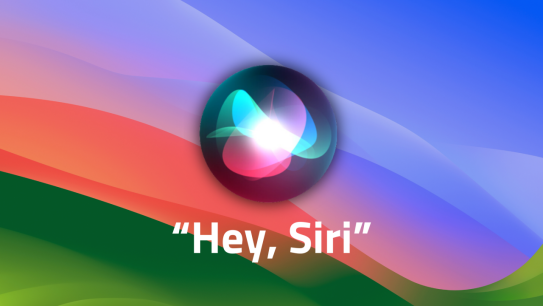
Aumento de dados
Através de modelos como Autoencoders Variacionais (VAEs) e Redes Geradoras Adversariais (GANs), novos pontos de dados sintéticos são gerados e adicionados aos conjuntos de dados existentes para aumentar o tamanho e a diversidade dos dados de treinamento, melhorando assim o desempenho dos modelos. Um exemplo disso é o StyleGAN da NVIDIA:
- StyleGAN: StyleGAN, desenvolvido pela NVIDIA, é um GAN amplamente utilizado para criar imagens de alta qualidade e alta resolução. Em termos de aumento de dados, o StyleGAN pode gerar um grande número de rostos humanos realistas ou outras imagens, facilitando a criação de conjuntos de dados mais diversificados para treinar modelos e melhorar o desempenho em reconhecimento facial e outros sistemas visuais.
Aplicações de vídeo/visuais
A IA generativa é pioneira na produção, modificação e análise de vídeo, sendo utilizada para criação de conteúdo, melhoria de vídeo, conteúdo personalizado, realidade virtual, treinamento, aumento de dados e compressão de vídeo, enquanto aborda questões éticas, como a detecção de deepfakes. Por exemplo, Deepfakes:
- Deepfakes: A tecnologia deepfake usa GANs para gerar vídeos e imagens extremamente realistas, aplicáveis na produção de filmes, realidade virtual e muitos outros campos. No entanto, também levanta preocupações éticas e morais, especialmente quando usada para criar notícias falsas ou conteúdo fraudulento. Como resultado, tecnologias para detectar conteúdo deepfake foram desenvolvidas para enfrentar esse desafio.
Essas aplicações demonstram o amplo potencial e impacto significativo da IA generativa em vários campos, embora persistam desafios tecnológicos e éticos.
Vantagens e desafios da Inteligência Artificial Generativa
A IA generativa pode ser amplamente aplicada em muitas áreas de negócios. Ela pode simplificar a interpretação e compreensão do conteúdo existente e criar automaticamente novo conteúdo. Os desenvolvedores estão explorando maneiras de como a IA generativa pode melhorar os fluxos de trabalho existentes, concentrando-se em adaptar completamente os fluxos de trabalho para aproveitar essa tecnologia. Os benefícios potenciais de implementar IA generativa incluem:
- Automatização do processo de redação manual de conteúdo.
- Redução do esforço para responder a e-mails.
- Melhoria das respostas a consultas técnicas específicas.
- Criação de imagens realistas de personagens.
- Resumo de informações complexas em narrativas coerentes.
- Simplificação do processo de criação de conteúdo em um estilo específico.
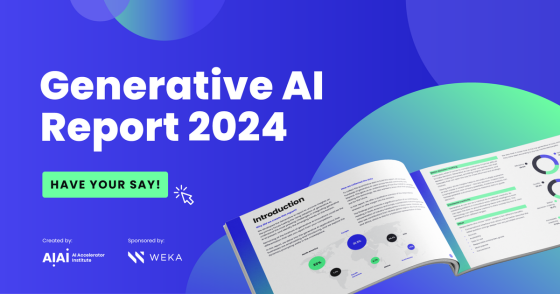
Embora existam algumas limitações, como dificuldades em identificar as fontes do conteúdo, a IA generativa continua evoluindo e fazendo avanços em vários campos. Por exemplo, os resumos de tópicos complexos são mais fáceis de ler do que explicações que contêm várias fontes para apoiar pontos-chave. No entanto, a legibilidade dos resumos vem ao custo da incapacidade do usuário de revisar as fontes de informação. Aqui estão algumas limitações a serem consideradas ao implementar ou usar aplicações de IA generativa:
- Nem sempre identifica as fontes do conteúdo.
- Avaliar preconceitos no material original pode ser um desafio.
- O conteúdo realista dificulta a identificação de informações imprecisas.
- Pode ser difícil entender como se adaptar a novas situações.
- Os resultados podem obscurecer preconceitos, discriminação e ódio.
Futuro da Inteligência Artificial Generativa
A notável profundidade e facilidade de uso do ChatGPT impulsionaram a adoção generalizada da IA generativa. A rápida adoção de aplicações de IA generativa também destaca algumas dificuldades em promover essa tecnologia de forma segura e responsável. No entanto, esses primeiros problemas de implementação provocaram pesquisas sobre melhores ferramentas para detectar textos, imagens e vídeos gerados por IA.
De fato, a popularidade de ferramentas de IA generativa como ChatGPT, Midjourney, Stable Diffusion e Gemini também gerou vários cursos de treinamento, adequados para todos os níveis profissionais. Muitos cursos têm como objetivo ajudar desenvolvedores a criar aplicações de IA, enquanto outros se concentram mais em usuários de negócios que procuram aplicar novas tecnologias em toda a empresa. Em algum momento, a indústria e a sociedade desenvolverão melhores ferramentas para rastrear as fontes de informação, criando uma IA mais confiável.
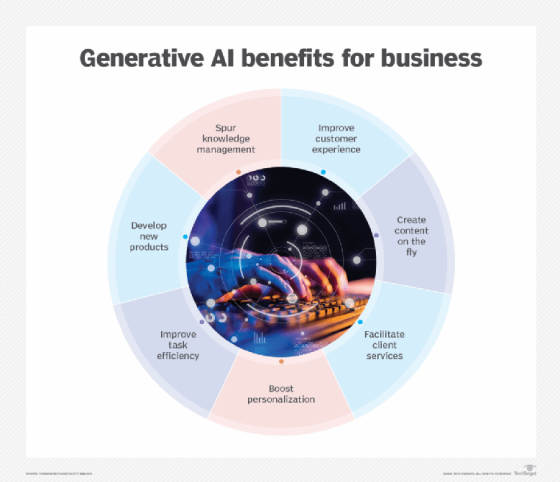
A IA generativa continuará evoluindo e progredindo em áreas como tradução, desenvolvimento de medicamentos, detecção de anomalias e criação de novos conteúdos, desde textos e vídeos até design de moda e música. Embora essas novas ferramentas autônomas sejam úteis, o futuro mais impactante da IA generativa virá da integração direta dessas capacidades nas ferramentas que já usamos.
É difícil prever todo o impacto futuro da IA generativa. No entanto, à medida que continuamos a aproveitar essas ferramentas para automatizar e aprimorar tarefas humanas, inevitavelmente teremos que reconsiderar a natureza e o valor da experiência humana.
Perguntas frequentes
Quem criou a Inteligência Artificial Generativa?
Joseph Weizenbaum criou a primeira IA generativa na década de 1960 como parte do chatbot Eliza. Em 2014, Ian Goodfellow introduziu as Redes Geradoras Adversariais (GANs). Posteriormente, a pesquisa da OpenAI e do Google provocou o boom da IA generativa, que levou a ferramentas como ChatGPT, Google Gemini e DALL-E.
Como construir um modelo de IA generativa?
Construir um modelo de IA generativa requer codificar eficazmente o conteúdo a ser gerado. Por exemplo, um modelo de IA generativa de texto representa palavras como vetores para capturar a semelhança entre palavras. A pesquisa mais recente do LLM fornece métodos eficazes para representar imagens, sons e outros conteúdos.
Como a IA generativa muda o trabalho criativo?
A IA generativa pode ajudar profissionais criativos a explorar várias ideias. Artistas e designers podem partir de conceitos básicos e explorar diferentes variações e melhorias. Ela também democratiza o trabalho criativo; por exemplo, comerciantes podem gerar imagens de marketing de produtos com comandos simples.
Resumo
O rápido desenvolvimento e a ampla aplicação da inteligência artificial generativa trazem oportunidades de inovação e melhorias de eficiência, juntamente com desafios éticos e sociais. Desde os primeiros chatbots até os poderosos modelos generativos multimodais de hoje, como DALL-E, ChatGPT e Gemini, a IA generativa permeou vários campos, incluindo design, geração de textos, produção de áudio e vídeo. Ao longo desse processo, devemos melhorar constantemente nossas habilidades técnicas e abordar as implicações éticas e legais. No futuro, à medida que a tecnologia continuar amadurecendo e sendo amplamente adotada, a IA generativa se tornará uma ferramenta poderosa em nossas vidas e trabalhos, mudando nossos fluxos de trabalho e redefinindo o valor da experiência profissional. Considere usar ferramentas como XXAI para aprimorar sua escrita e produtividade!